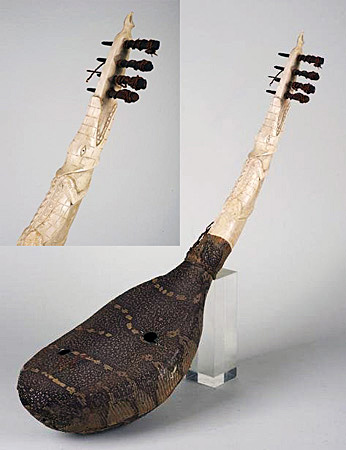
Owner: HWMC
Catalog#: AF-CHHP-19-14
Source: Figurative Harp (Domu) | Mangbetu peoples | The Metropolitan Museum of Art (metmuseum.org)
Harps
Mangbetu 'Domu' Allegator
Democratic Republic of Congo (Zaire)
Mangbetu
Wood, Reptile Skin, Ivory
ca. Mid-20th century
Length: 27.1 inches
Chordophone – Harp – Plucked
This Mangbetu arched harp called “Domu” has a carved ivory neck fashioned as an alligator. Resonating body is covered with reptile skin. Four string harp (strings missing).
The harp first appeared in Mangbetu culture some time in the late nineteenth century, and reached its peak during the colonial period of the early twentieth century. Many believe that the initial practice of carving representations of human heads was adopted from the neighboring Azande peoples to the north. As cultural and musical traditions have changed over the years in Mangbetu culture, musical instruments have appeared and disappeared. Some Mangbetu elders claim that the heads of the harp represented Queen Nenzima and King Yangala, and that after their deaths the practice of that particular style gradually declined. Today, harps are no longer found in Mangbetu society.
